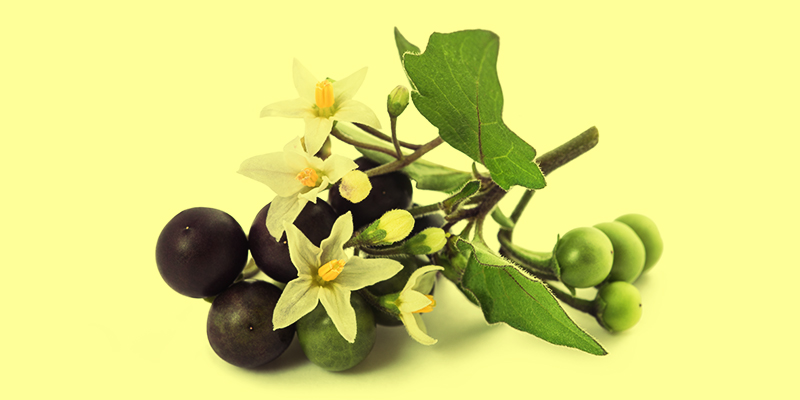There’s something about a poisoning plot that gets me every time.
Over the years, my husband and I have become avid watchers of Dateline. Sometimes it can be overwhelming scrolling through all the available episodes and choosing one to watch. Personally, I’m always intrigued by murders involving poison. The covert nature of the act is chilling—not at all in-your-face like a murder with a gun or knife. It may also be that poison is so often the weapon of choice for women in caretaking roles. We’ve all heard the tales of women who slipped poison in their husbands’ food or drink, which turns the stereotype of the gentle, loving homemaker on its head.
In seventeenth century Italy, a woman by the name of Giulia Tofana capitalized on this phenomenon. Giulia created a colorless, tasteless concoction from arsenic and belladonna, or deadly nightshade, and disguised the poison as powdered makeup that could be stowed discreetly on a vanity or dressing table. This “Aqua Tofana” allowed women to gradually add the poison to their husbands’ meals to create the illusion of illness over time, since a sudden death might arouse suspicion. In fact, Giulia admitted—only under the duress of torture—that Aqua Tofana was responsible for the deaths of over six hundred men.
While doing research for my book, Such Pretty Flowers, I came to realize that the weaponization of plants has been a way for women in particular to wield power—and exact revenge—within relationships. Giulia’s clientele were often women in abusive, arranged marriages with no escape in sight; wives in India utilized the datura plant to similar ends. A member of the nightshade family, datura boasts lovely white blossoms and has earned the nickname “devil’s trumpet” for its hallucinogenic and deadly properties. There are accounts of women feeding datura leaves to beetles, and then seasoning the meals of their cheating partners with the poisonous beetle feces. Similar stories crop up quite close to my home, too. One of the fifteen women on California’s death row attempted to claim her husband’s life insurance by poisoning his food with oleander leaves (though it’s worth noting he didn’t die from the plant, but rather from a follow-up cocktail of Gatorade and antifreeze).
Weaponizing flowers plays with the juxtaposition of beauty and deadliness in a way that fascinates me, too. It’s unexpected, especially because flowers are so often associated with expressions of love (think: Valentine’s Day and bridal bouquets) and femininity. The belladonna from Giulia’s Aqua Tofana, for instance, has purple star-shaped blossoms and striking black berries. It’s deceptively pretty. Yet merely rubbing up against the plant may cause angry pustules to form on the skin; eating a handful of those berries is likely to lead to seizures, psychosis, and/or death.
It doesn’t even take a plant with a name like “deadly nightshade” to be noxious. In fact, many everyday plants have dangerous properties, too. Hydrangeas—often placed as decoration on wedding cakes—actually contain small amounts of cyanide. Through my research, I learned that the bleeding heart flowers I’d gather from the garden in my childhood home contain alkaloids capable of causing breathing problems and seizures. Even tulips produce poisonous sap responsible for the rash and swelling called “tulip finger” among florists. All around us, there are toxins hiding in the pretty and quotidian.
I guess I shouldn’t be so surprised that there’s often a fine line between the beautiful and the dangerous, though. It’s likely some of Giulia’s Italian peers used eye-drops made from belladonna because the concoction would dilate their pupils and make them appear doe-eyed. And what is today’s Botox if not a toxin repackaged for the beauty industry? We seem to have a history of dancing around the beautiful and the toxic, testing our limits. Again and again, the power these products offer—beauty, the illusion of youth—has proven too alluring for us to resist.
I relished the experience of writing the character Maura in Such Pretty Flowers because it meant experimenting with all of these facets of dangerous flowers. As a respected florist among the Savannah elite, Maura draws power from her plants. She’s also a contradiction: beautiful and feminine, with the edge of something darker lurking below, and it is this contradiction that makes her so enthralling to our protagonist, Holly. There’s something covert about Maura’s power, too. It’s not in-your-face like a gun-wielding, masked murderer . . . and this is even more unsettling. After all, it takes Holly the entire book to pin down what exactly is going on within the walls of Maura’s greenhouse.
Maura would undoubtedly have a field day were she ever to visit Alnwick Garden, a so-called “poison garden” in Northcumberland, England that I discovered while scrolling social media. The garden is said to be filled with over a hundred “toxic, intoxicating, and narcotic plants”; an imposing iron gate stands at the entrance featuring a skull and crossbones and an unnerving warning: “these plants can kill.” Someday, I’ll have to plan a trip to see it for myself. I think of Alnwick Garden as an armory of these oh-so-unique weapons that are deceptively beautiful and covertly wielded, that are often hiding under our noses in the form of the mundane. As a horror writer, I appreciate the reminder that there are different flavors of evil—and that sometimes what’s dismissed as simply pretty can be concealing the most sinister of all.
Sources: Amy Stewart, Deadly Plants: The Weed That Killed Lincoln’s Mother & Other Botanical Atrocities (Chapel Hill: Algonquin Books of Chapel Hill, 2009), 114.
***


















